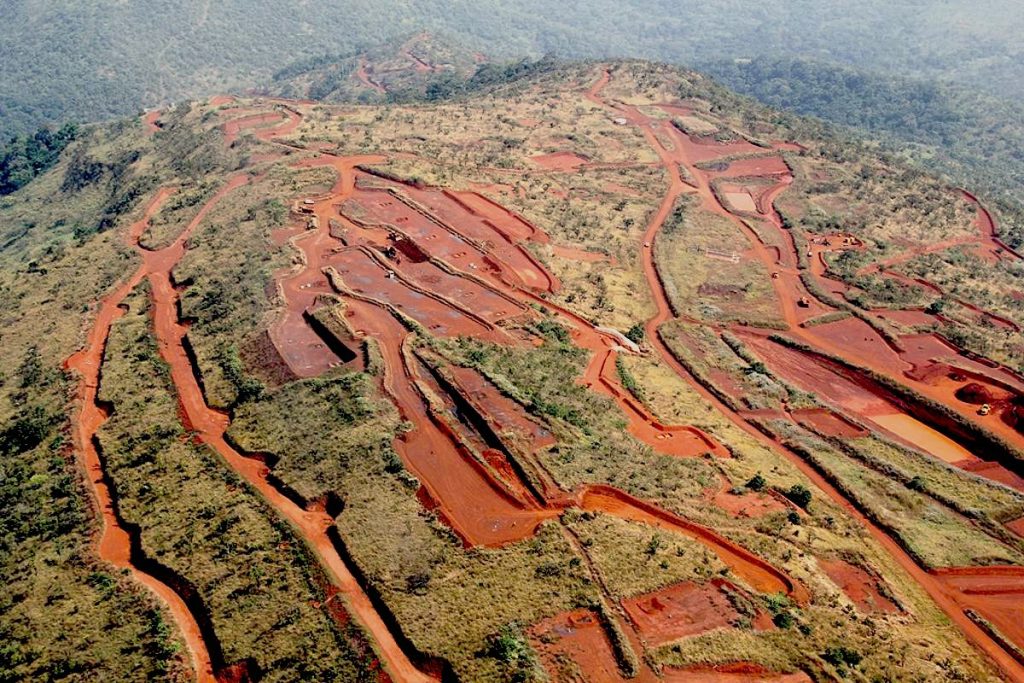Iron ore prices surged following a fatal accident at Rio Tinto’s Simandou project in Guinea, which has forced the mining giant to suspend operations at what is considered one of the world’s most significant undeveloped high-grade iron ore deposits.
The company confirmed that all activities at the SimFer mine site have been halted after the death of a contract worker. “All activity at the SimFer mine site is currently suspended, and support is in place for colleagues affected by
...
Iron ore prices surged following a fatal accident at Rio Tinto’s Simandou project in Guinea, which has forced the mining giant to suspend operations at what is considered one of the world’s most significant undeveloped high-grade iron ore deposits.
The company confirmed that all activities at the SimFer mine site have been halted after the death of a contract worker. “All activity at the SimFer mine site is currently suspended, and support is in place for colleagues affected by this event,” Rio Tinto said in a statement.
Simon Trott, who assumed the role of Rio Tinto’s chief executive officer just this week, is expected to visit the site personally and has committed to conducting a thorough investigation into the circumstances surrounding the incident. Details about the exact cause of the fatality have not yet been disclosed.
The suspension has sent ripples through global iron ore markets, pushing prices to their highest level in more than a week as traders assess potential supply disruptions from the massive project. The market reaction underscores Simandou’s strategic importance to global iron ore supply chains.
Located in Nzérékoré in southeastern Guinea, the Simandou project represents a significant investment in African mining infrastructure. Rio Tinto operates two of the four mining blocks through its SimFer joint venture, which includes China’s Chalco Iron Ore Holdings (CIOH) and the Guinean government as partners.
The project had been progressing toward a November 2025 target for initial shipments, with plans to eventually reach a production capacity of approximately 120 million tonnes of high-grade iron ore annually. This volume would make Simandou one of the largest new sources of global iron ore supply in decades, potentially reshaping market dynamics and pricing structures.
Industry analysts are now questioning whether this timeline remains feasible given the operational suspension. While Rio Tinto has not announced any revisions to the production schedule, delays in major mining projects are common following safety incidents as companies implement additional safeguards and review procedures.
This incident adds to Rio Tinto’s concerning safety record over the past two years. It marks the seventh fatality at the company’s operations during this period, ending what had been a five-year stretch without fatalities at Rio Tinto-managed sites. Last October, another contractor was killed at the SimFer port site, and in January 2023, four employees died in a charter flight crash while traveling to the Diavik diamond mine in Canada.
The timing of the incident coincides with complex market conditions for iron ore. In China, which consumes approximately 70% of global seaborne iron ore, demand has remained resilient despite environmental restrictions affecting steel production. Authorities in Tangshan, a major steelmaking hub, have implemented temporary production curbs to improve air quality in Beijing ahead of a military parade commemorating the end of World War Two.
Despite these restrictions, iron ore consumption has shown remarkable stability. According to data from consultancy firm Mysteel, the average daily hot metal output—a key indicator of iron ore demand—remained steady at 2.41 million tonnes for the week ending August 21.
The Simandou project has faced numerous delays over its long development history, with political instability in Guinea, infrastructure challenges, and fluctuating iron ore prices all contributing to its complex trajectory. The current suspension adds another layer of uncertainty to a project that has already navigated significant obstacles.
Rio Tinto has not provided an estimated timeline for resuming operations, which will likely depend on the findings of the investigation and any resulting safety improvements. The company is expected to work closely with its joint venture partners and local authorities during the investigation process.
The incident highlights the ongoing safety challenges faced by the mining industry, particularly in remote and developing regions, even as companies increasingly emphasize their commitment to worker safety and well-being.


